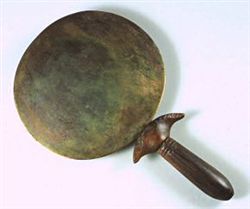
We know quite a lot about daily life in ancient Egypt from various informative sources. First, there are numerous scenes of daily life in the tombs; then there are the so-called talatat blocks from El-‘Amarna, with similar scenes. We also have models of workshops, bakeries, breweries, carpenter's workshops, etc., and of other activities from daily life, for example a cattle count, which have also been found in tombs. In addition, many tombs contained objects which were used in life, such as furniture, and even the remains of or ingredients for meals. A great deal of information has also been garnered from reconstructions on the basis of archaeological finds - particularly from El-‘Amarna and Deir el-Medinah. Among the written source material are a number of extensive collections of texts, such as the Hekanakhte Letters. Hekanakhte was the owner of a large estate in the Middle Kingdom. There are also numerous short texts of all types, usually written on ostraca or papyrus, for example letters, notes, administrative and legal documents etc., all of which give us important glimpses of everyday life, even if they do not bear much relationship to each other. Thousands of such texts were found at Deir el-Medinah. We know at least something about virtually every aspect of daily life. The houses were usually built of mud bricks, and were clustered together in towns and villages along the Nile. The most important food for the Egyptians was bread, and judging by the many names there must have been dozens of different types. Beef was probably only consumed by the upper classes, pork was sometimes available to the poorer classes as was game, as evidenced by various types of hunting equipment. Further, there were several types of fruit and vegetables. The most important drink was beer, and wine was probably drunk mainly by the rich. Other products such as milk, cheese and honey were also known. Clothes in ancient Egypt were usually made of linen. Jewellery and wigs were used for adornment, as were cosmetics, although the latter were also used for reasons of health. Objects from all of these categories have been found, as well as toilet articles such as mirrors, combs and razors. Religion and magic, much more closely related in ancient Egypt than in our own times, played an important role in everyday life. Amulets were worn to protect against all kinds of danger. When a baby was born, for example, something which took place in a separate part of the house, both mother and child were protected by magico-religious practices and by amulets. Children are represented playing with each other, and all kinds of toys have been found. Games involving adults are also known, for example the famous senet-game. Other pastimes are illustrated by hunting scenes, banqueting scenes and actual musical instruments, although each of these activities also had significant religious meaning. Many Egyptians worked as farmers, often for the state, a temple or a great landowner. The numerous titles that have come down to us in the texts not only demonstrate the multitude of professions, but also the hierarchical organisation. Sons were usually trained for a profession by their fathers, but sometimes by a teacher; thanks to the numerous writing exercises that have been found we know a great deal about the training of a scribe. The profession was highly respected, particularly when compared to the hard life of a labourer or a soldier.